Something went wrong!
Hang in there while we get back on track
Best attractions in Tuscany

The Leaning Tower of Pisa, with its distinctive tilt, is one of the world's most famous landmarks. Construction began in 1173, but by the time the third floor was added in 1185, the tower had already started to lean due to the soft, sandy ground. Originally intended as a freestanding bell tower for the Cathedral of Pisa, its completion was delayed by construction pauses and adjustments, finally finishing in 1372. Today, the tower tilts at about four degrees and draws millions of visitors each year who brave its 294 steps.

Santa Maria del Fiore is a masterpiece of Renaissance art and architecture. With its magnificent red-tiled dome designed by Brunelleschi and a facade that delights in shades of pink, white, and green marble, the Duomo commands the city's landscape. Build between 1296 and 1436, it claims the title of the third-largest cathedral in Europe, surpassed only by St. Peter’s in Rome and the Duomo in Milan. Inside, the cathedral shelters artistic treasures from Michelangelo to Donatello, alongside stunning frescoes.

This world class art gallery houses the largest collection of Italian Renaissance art in the world and is a premier destination for art enthusiasts. Located in the magnificent Palazzo degli Uffizi in over 100 rooms, masterpieces by Botticelli, Michelangelo, and Leonardo da Vinci astonish millions of visitors every year. The Medici family's legacy is omnipresent, their collection a gift to Florence ensuring the city's eternal connection to the Renaissance.

Val d'Orcia, a picturesque region in southern Tuscany extends from the hills south of Siena to the slopes of Monte Amiata. Recognized as a UNESCO World Heritage site for its refined beauty, the valley is famous for its iconic cypress-lined vistas and clay hills. Within its bounds lie historic gems like Pienza, Radicofani, Montalcino, and Montepulciano.

The highlight of this art museum is Michelangelo's David, his most challenging project. Carved from a single, imperfect block of marble, this iconic statue captivates with its intricate details and lifelike expressions.

The Cathedral of Siena is undoubtedly one of Italy’s most impressive examples of Romanesque-Gothic architecture, rivaling, and perhaps even surpassing, the famed Cathedral of Florence in its splendor.

The Palazzo Vecchio, with its imposing structure and commanding presence, is one of Florence's top sights. This historic building serves as the city's town hall and casts its gaze over the bustling Piazza della Signoria, an iconic square adorned with a replica of Michelangelo's David.

Spanning the Arno River in Florence with its medieval stone arches, the Ponte Vecchio is adorned with a vibrant trail of jewellery and souvenir shops. The iconic bridge connects the city's cultural heartbeats:

As you wander through the cobbled streets of San Gimignano, there’s one spot you can’t miss: the Torre Grossa. Rising 54 meters, it’s the tallest tower in the city and has stood as a symbol of power and wealth since the 14th century. The climb - 218 steps, no elevator - may be challenging, but the reward is a stunning 360-degree view of Tuscany’s rolling vineyards and the sea of terracotta rooftops below.

In the heart of Pienza stands the Palazzo Piccolomini, one of the earliest examples of Renaissance architecture, commissioned by Pope Pius II in 1459 from Bernardo Rossellino as part of his ideal city. This three-story palace, made of finely worked stone, impresses with its square layout, a central courtyard, and a terraced garden that offers a stunning view over the Val d'Orcia. Inspired by the Florentine Palazzo Rucellai, this building, now used as a museum, combines elegant architecture with Renaissance garden design, featuring rectangular flower beds, a fountain, and an octagonal fountain adorned with the Piccolomini coat of arms.
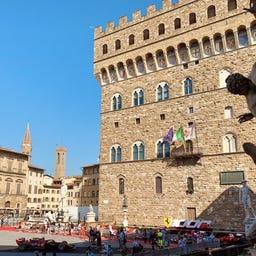
The Piazza della Signoria is the historic and vibrant heart of Florence, located in front of the imposing Palazzo Vecchio. This bustling square houses an impressive collection of statues and monuments, resembling an open-air museum that attracts tourists from around the world. A visit to the piazza is essential for anyone visiting Florence.
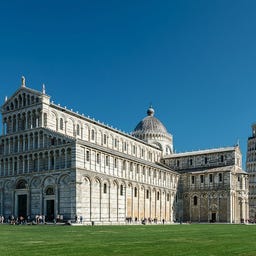
The Cathedral of Pisa, the oldest structure on the Piazza dei Miracoli, was begun in 1064 outside the city's walls to showcase Pisa's confidence against potential attacks. The construction was funded by war booty, notably from a victorious raid on the Saracens in Palermo. This cathedral, along with St. Mark's Basilica, is one of the first monumental buildings of medieval Italy, making it particularly significant in art history. It was built either before or around the same time as the Venetian basilica, during a period when both powerful maritime republics were vying to assert their cultural dominance. The origins of the Persian and Byzantine influences in its design remain unclear.
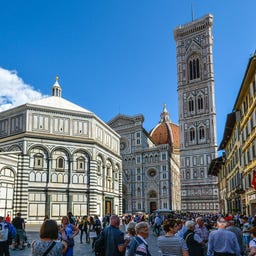
When visiting Florence, a stop at Piazza del Duomo is an absolute must – the heart of the city and a place filled with unique architecture. Dominating the square is the Cathedral of Santa Maria del Fiore, a masterpiece of Gothic architecture, whose iconic dome by Brunelleschi defines Florence's skyline.

The largest masonry dome in the world has been towering over the Cathedral of Santa Maria del Fiore in Florence since the 15th century and is considered one of the most important buildings in Europe since Roman times. With a height of 116 meters and a weight of 37,000 tons, Filippo Brunelleschi created an architectural masterpiece here between 1420 and 1436, which did not rely on traditional wooden scaffolding. The construction, consisting of two shells, impresses not only with its perfect proportions based on the Golden Ratio but also with the magnificent frescoes of the Last Judgment inside.
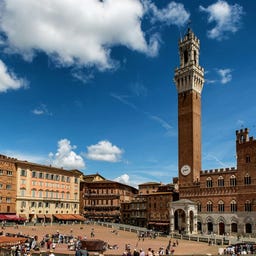
The heart of Siena enchants with its unique shell-shaped design and rich history. This iconic square, laid out in the 14th century, is best known as the site of the "Palio di Siena" horse race, held twice a year. You might recognize it from a James Bond movie, where Bond famously races across Siena's rooftops!
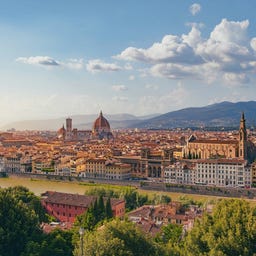
Piazzale Michelangelo is undeniably one of the most popular viewpoints in Florence. Perched on a hill south of the Arno, it offers stunning panoramic views of the city, including the Duomo, Ponte Vecchio, and the Tuscan hills. At sunset, crowds gather to witness the Renaissance city bathed in golden light.

The Basilica di Santa Croce, located in the heart of Florence, is an impressive landmark and the largest Franciscan church in Italy. Known as the "Pantheon of Florence," it houses the tombs of famous figures such as Michelangelo, Galileo Galilei, and Machiavelli. The basilica's facade, a masterpiece of neo-Gothic style, is elegant and beautiful. Inside, you will find magnificent frescoes by Giotto depicting the life of Saint Francis, as well as Donatello's splendid "Deposition from the Cross."

The Square of Miracles, or Piazza del Duomo, ranks among the world's most stunning plazas. Its centerpiece, the famous Leaning Tower, stands boldly beside the majestic Cathedral with its gleaming white marble facade.

The Palazzo Pitti, just a stone's throw from the Ponte Vecchio, was once the residence of the Medici and now houses some of Florence’s most important museums.
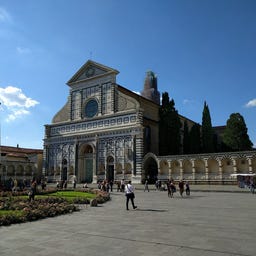
The Basilica di Santa Maria Novella is one of the most significant churches in Florence and a masterpiece of Gothic and Renaissance. It is located at Piazza Santa Maria Novella, directly opposite the train station of the same name. The magnificent facade, designed by Leon Battista Alberti, was completed in 1470. The complex includes the church, two cloisters, and several monastic buildings.

The Central Market (mercato centrale) is a two-level, indoor food market and part of the larger San Lorenzo market.

In front of you stands one of the most famous sculptures in art history: the 5.20-meter tall David made of white Carrara marble, created by Michelangelo in the early 16th century. The statue depicts the biblical hero at the moment of intense concentration before his battle with Goliath - a revolutionary representation without the severed head of the giant.
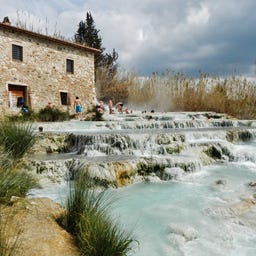
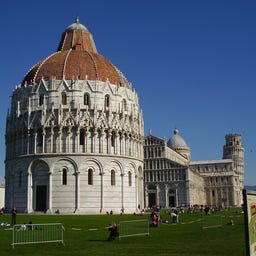
The Baptistery rises like a marble crown on the Piazza dei Miracoli. Begun in 1153 under the direction of Diotisalvi, this remarkable structure combines Romanesque austerity with Gothic elegance. Standing 55 meters tall and over 100 meters in diameter, it is the largest baptistery in the world. Its two distinct dome halves create a stunning play of colors at sunrise and sunset.
Inside, the atmosphere is simple, almost ascetic, drawing the eye to the marble pulpit by Nicola Pisano, a 1260 masterpiece that marks the dawn of the Renaissance. Every half hour, the Baptistery’s acoustic marvel comes to life: its double dome, with an inner pyramid and outer hemisphere, transforms even whispers into something akin to heavenly music.
Also noteworthy is the beautiful octagonal baptismal font, crafted in 1246. Incidentally, construction wasn’t completed until 200 years later, in 1363.
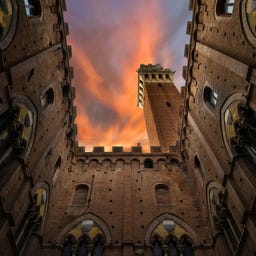
Der Torre del Mangia ragt imposant über der Piazza del Campo und symbolisiert die weltliche Macht von Siena im Mittelalter. Erbaut zwischen 1325 - 1344, wurde der Turm bewusst so hoch wie der Dom gestaltet, um das Gleichgewicht zwischen Kirche und Staat zu symbolisieren. Mit seinen 87 Metern (102 Meter inklusive Blitzableiter) ist er heute der dritthöchste mittelalterliche Turm in Italien. Ein besonderes Detail ist die weiße Travertinspitze, die später von Agostino di Giovanni hinzugefügt wurde.

In the magnificent Cappelle Medicee, which were built in the 16th and 17th centuries as an extension of the Basilica San Lorenzo, you will find the most impressive tombs of the powerful Medici family. The New Sacristy, designed by Michelangelo, houses monumental tombs, while the octagonal Princes' Chapel impresses with its valuable marble and semi-precious stone work, as well as the second-largest dome in Florence.
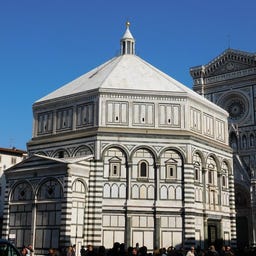
Directly opposite the impressive Cathedral of Santa Maria del Fiore stands the octagonal Baptistery, one of the oldest places of worship in Florence from the 11th century. The three bronze doors - including the famous "Gates of Paradise" by Lorenzo Ghiberti - are considered masterpieces of the Italian early Renaissance. Inside, you will find an impressive dome adorned with golden mosaics from the 13th century, depicting the Last Judgment and biblical scenes. Not only countless Florentines were baptized here, including Dante Alighieri, but also knights and poets were inaugurated into their offices.
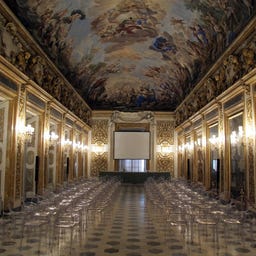
In the heart of Florence stands the Palazzo Medici Riccardi, the first city palace of the powerful Medici family from the 15th century. Designed by Michelozzo between 1444 and 1452, this Renaissance building impresses with its cubic shape, characteristic rusticated facade, and an elegant courtyard adorned with Corinthian columns.

About 30 kilometers from Siena, you will find the Abbazia di San Galgano, one of the most impressive monastery ruins in Tuscany. Built between 1218 and 1288, this Cistercian abbey was the most powerful monastery of its kind in the region during the 13th century, before famines and the plague led to its decline.
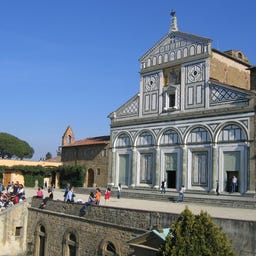
High above Florence stands the Abbazia di San Miniato al Monte, one of the most beautiful examples of Romanesque architecture in Tuscany, whose construction began in 1018 under Bishop Alibrando. In the majestic basilica, you can discover one of the oldest functioning sundials in Europe and a unique zodiac marble floor from the 13th century, which lights up in the sign of Cancer during the summer solstice.
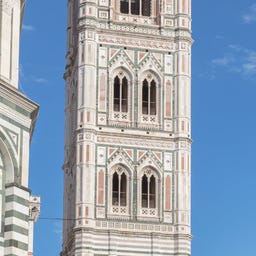
The 85-meter tall Campanile is the striking bell tower of the Cathedral of Santa Maria del Fiore in Florence. Its construction began in the late 13th century under Arnolfo di Cambio and was completed in 1359 by Francesco Talenti. Named after its second architect, Giotto di Bondone, the tower impresses with its façade made of white, green, and red marble, as well as intricately designed reliefs and statues, the originals of which can be admired today in the Museum of the Opera del Duomo. After climbing 398 steps, you are rewarded at the top with a magnificent panoramic view of Florence—a challenge that around 290,000 visitors undertake each year.
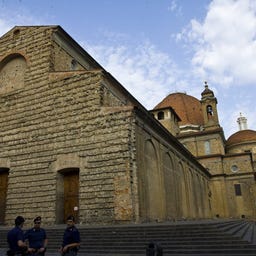
The Basilica di San Lorenzo is one of the oldest churches in Florence, founded in the 4th century. As the family church of the powerful Medici family, it underwent a comprehensive reconstruction in Renaissance style starting in 1418 under Filippo Brunelleschi, whose innovative design became a model for many other churches.
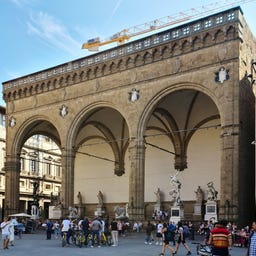
The Loggia della Signoria is an impressive Gothic colonnade located right next to the Palazzo Vecchio in the heart of Florence. It was built between 1376 and 1382 as a meeting place for the Florentine Republic. Under Grand Duke Cosimo I., it transformed in the 16th century into a publicly accessible sculpture gallery, which still houses significant masterpieces like Benvenuto Cellini's "Perseus" and Giambologna's "The Rape of the Sabine Women."
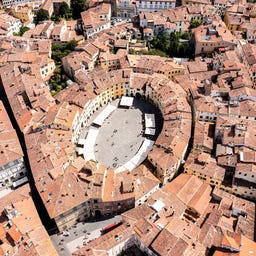
At first glance, you see an oval square - but the Piazza dell'Anfiteatro stands on the remains of a Roman amphitheater, whose shape it has preserved to this day. Over the centuries, the place served as a salt warehouse, prison, and marketplace, until architect Lorenzo Nottolini uncovered the historical structure in the 19th century.
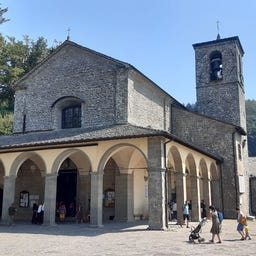
High up in the Tuscan Casentino forests, at an altitude of 1,128 meters, you will find the majestic monastery Santuario della Verna, where Francis of Assisi is said to have received the stigmata in 1224. Founded in the 13th century, this sanctuary has evolved over the centuries into an extensive complex featuring a Renaissance basilica, intricate della Robbia terracottas, and numerous chapels.

On the Piazza della Repubblica in the heart of Florence, you step right into the vibrant center of the city, where the most important roads intersected even during Roman times. The elegant pedestrian zone is lined with magnificent palaces, including the Palazzo Levi with its historic coffee houses and the impressive Palazzo dell'Arcone featuring its distinctive triumphal arch.
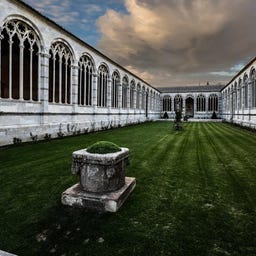
On the edge of the famous Cathedral Square lies the Campo Santo, or Holy Field. This cemetery was partially built with soil from Golgotha, a sacred place believed to cause bodies buried there to decay within 24 hours. Crusaders brought this holy soil back to Italy.
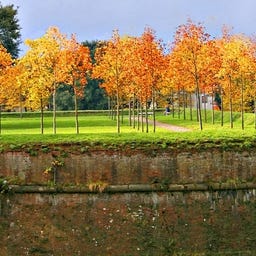
The Mura di Lucca, Europe's largest fully preserved city wall built according to modern fortification principles, surrounds the Tuscan city for a length of 4.2 kilometers. Constructed between 1504 and 1648 as protection against the expanding Florence, the structure was never put to the test militarily—its only challenge was a flood of the Serchio River in 1812.
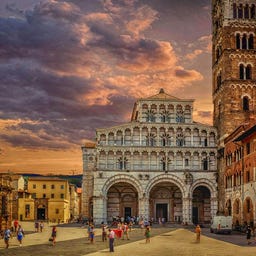
The impressive Cattedrale di San Martino combines Romanesque and Gothic architecture and has shaped the cityscape of Lucca as the mother church of the archdiocese since the 8th century. The magnificent exterior captivates with its intricately decorated façade featuring the famous relief of Saint Martin sharing his cloak with a beggar.
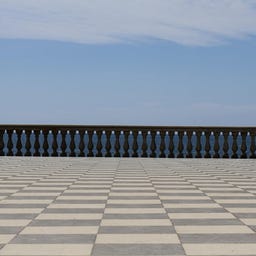
The Terrazza Mascagni is a spacious waterfront promenade in Livorno, known for its distinctive black-and-white checkerboard pattern made up of 34,800 tiles and 4,100 elegant columns. This area was originally home to a fortress and later the amusement park Eden until the late 19th century, before the current terrace was created in the 1920s based on designs by Enrico Salvais and Luigi Pastore.
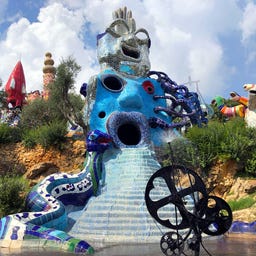
In Tuscany, you can explore the fascinating Giardino dei Tarocchi, a sculpture park created by the artist Niki de Saint Phalle from 1979 to 1996. Inspired by Parque Güell in Barcelona and the Garden of Bomarzo, she designed a unique art landscape over two hectares, featuring monumental figures inspired by the major arcana of the tarot. The colorful sculptures, adorned with mirrors, glass, and ceramics, invite you on a personal journey of discovery, allowing you to interpret the symbolic meanings for yourself. At the center of the park stand the impressive figures of the High Priestess and the Magician, from which winding paths lead to other remarkable artworks like the Emperor, the Tower, and the Empress-Sphinx.
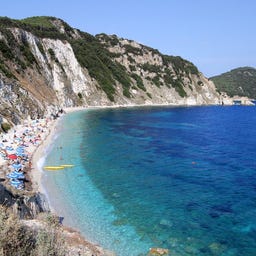
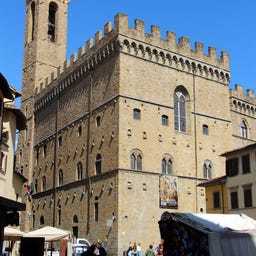
In the former city palace Palazzo del Bargello, you will find one of the most significant sculpture collections of the Renaissance in the world. Here, you can admire masterpieces by Michelangelo, Donatello, and other greats of Italian art history, including both versions of Donatello's famous "David" in marble and bronze.
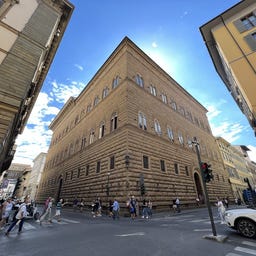
The Palazzo Strozzi is one of the most important Renaissance palaces in Italy, built between 1489 and 1538 as a powerful statement by the Strozzi family, who were rivals of the Medici.
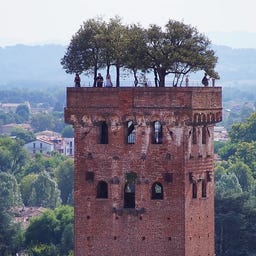
The Torre Guinigi is one of the few remaining towers from the 14th century in Lucca and surprises with a unique rooftop garden where ancient oaks have been growing for centuries. The 44-meter-high tower was built by the powerful Guinigi family as a symbol of their power, at a time when the city had over 250 such towers.
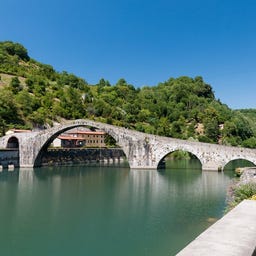
The striking Ponte della Maddalena spans the Serchio River near Borgo a Mozzano in the province of Lucca and captivates with its exceptionally high main arch, which earned it the nickname "Devil's Bridge." Originally built in the 11th/12th century under Matilde di Canossa, the bridge took on its current form in the early 14th century thanks to Castruccio Castracani, the ruler of Lucca. Its official name comes from a former chapel on the eastern bank, while numerous legends surround the structure - including the tale of the noblewoman Lucida Mansi, who allegedly traded her soul here for eternal youth.
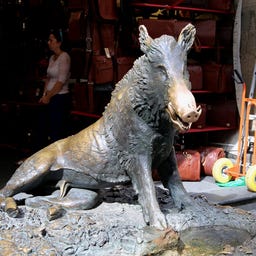
At the Loggia del Mercato Nuovo in Florence, you’ll find one of the city’s most beloved traditions: the "Porcellino," a bronze boar with a shiny, polished nose that gleams from countless touches. The statue you see today is a detailed replica of the bronze work created by Pietro Tacca in the 17th century, which is based on an ancient marble sculpture.
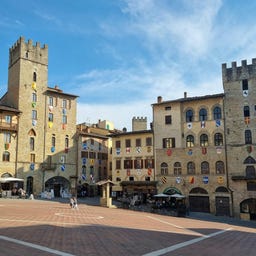
The Piazza Grande in Arezzo is the heart of this charming city and one of Tuscany’s most picturesque squares. Surrounded by notable Renaissance architecture, including the Palazzo delle Logge designed by Giorgio Vasari, the square is remarkable for its sloping layout and the seamless blend of buildings from different periods.

The Palazzo Blu, a former 14th-century noble palace, houses a small art museum. Inside, you'll find a permanent exhibition of Tuscan paintings and antique furniture, along with temporary art exhibitions—including a few pieces by Galileo Galilei. It's an ideal retreat for art lovers looking to escape the crowds and summer heat.
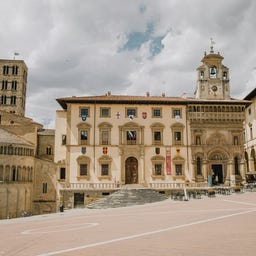
The Chiesa di Santa Maria della Pieve in the heart of Arezzo impressively combines Romanesque and Gothic architectural elements and has a history that dates back to 1009. The distinctive bell tower, with its 80 windows, is aptly called the "Tower of a Hundred Holes" and was completed in 1330. In the three-nave church, you can find art historical treasures like the polyptych by Pietro Lorenzetti from the 14th century and the baptismal font by Giovanni d'Agostino. The remarkable façade, featuring three richly decorated portals and four stacked levels, was created in the 13th century and is considered one of the most impressive examples of Tuscan church architecture.
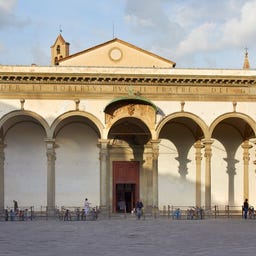
The Basilica della Santissima Annunziata is the most important Marian shrine in Florence and impresses with its blend of Renaissance and Baroque architecture. Built by the Servites in the 13th century, the church owes its significance to a miraculous Annunciation fresco from 1252 that is venerated for its wonders.
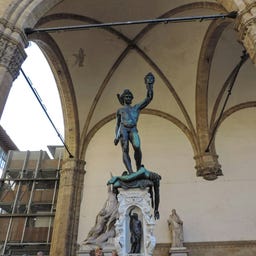
Under the magnificent Loggia dei Lanzi in Florence, you will find one of the most impressive bronze sculptures of the 16th century: Benvenuto Cellini's monumental Perseus, triumphantly presenting the severed head of Medusa. The statue, over 5 meters tall and created between 1545 and 1554 on the commission of Duke Cosimo I de' Medici, is considered a masterpiece of Italian Mannerism and captivates with its fascinating details - including a hidden self-portrait of the artist on the neck of Perseus.
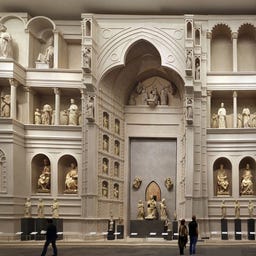
At the Museo dell'Opera del Duomo, you will find one of the most important collections of Gothic and Renaissance sculptures in Italy, featuring masterpieces by Michelangelo and Donatello. A well-designed tour takes you through 28 rooms across three floors and 6,000 square meters, showcasing the most precious art treasures of the Florentine Duomo complex since 1891.
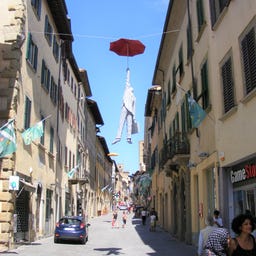
Corso Italia is Arezzo's main shopping street with a mix of artisanal shops, cafes, wine bars and boutiques. Discover handmade crafts, Italian jewellery and leather goods to commemorate your visit to Arezzo. Its a great city to find unique souvenirs and precious gifts. The cross-street of Via Cavour and Via Garibaldi is also full of shops.
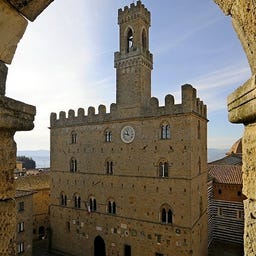
The mighty Palazzo dei Priori is the oldest city palace in Tuscany and has been standing in the heart of Volterra since the 13th century. The stone building, constructed by Riccardo da Como starting in 1208, impresses with its distinctive facade adorned with terracotta coats of arms of Florentine families and rounded battlements. In the beautifully frescoed halls, where the city elders once resided, you can find significant artworks like the "Annunciation" by Iacopo di Cione Orcagna from 1398. The palace still serves as the town hall and has recently been used as a filming location for the TV series "The Medici" and the "Twilight" movie "New Moon."
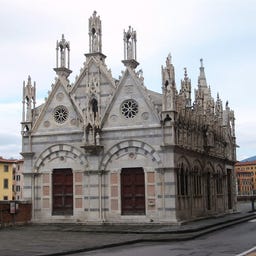
Santa Maria della Spina, a gem of Pisan Gothic architecture, was built in 1230 from white marble. Despite its small size, it impresses with an intricate façade adorned with statues and ornate pinnacles. The church was named "Spina" because it originally housed a thorn from Christ’s Crown of Thorns.
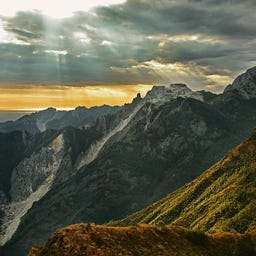
In the Apuan Alps, an impressive mountain range in the northwest of Tuscany, you will find one of the most geologically diverse regions in Italy. This area, recognized as a UNESCO Global Geopark since 2012, is home to about half of Tuscany's biodiversity and offers an extensive network of hiking trails, climbing routes, and caves like the Grotta del Vento.
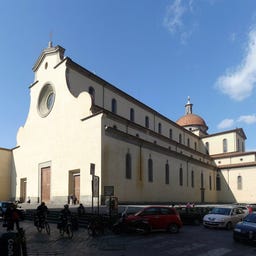
The Basilica di Santo Spirito in the Oltrarno district is one of the most significant churches in Florence and was the last major project designed by the Renaissance architect Filippo Brunelleschi. Inside, you'll find three nave sections separated by columns and 38 intricately designed side altars, while the simple façade dominates the square of the same name.
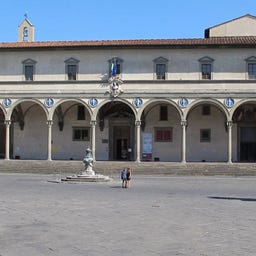
The Spedale degli Innocenti at the Piazza della Santissima Annunziata is one of the first orphanages in Europe and is considered a milestone of Renaissance architecture. The building, designed by Filippo Brunelleschi, with its characteristic columned loggia, was opened in 1445 and housed abandoned children for centuries, who could be left by their parents anonymously through a special wheel.
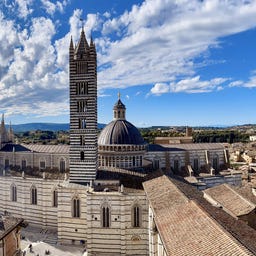
The Facciatone Terrace (= Façade) is a fascinating remnant of an unfinished cathedral expansion, offering a breathtaking 360-degree panoramic view of Siena and the surrounding Tuscan landscape. Conceived in the 14th century as part of a grander cathedral, the Facciatone now stands as a striking symbol of Siena's ambitious architectural vision. Its story is closely tied to the Great Plague of 1348, which abruptly halted construction, leaving behind this fascinating fragment of medieval ambition.
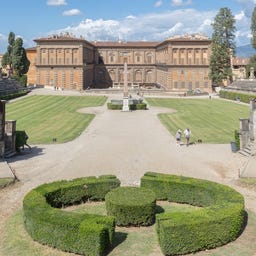
Behind the magnificent Palazzo Pitti lies one of the most significant Italian gardens in the world: the Giardino di Boboli, a 45,000 square meter open-air museum filled with sculptures spanning two millennia. Established in the 16th century by the Medici family, this park has been continuously expanded over the centuries and now impresses with its artistically designed terraces, hidden grottos, and majestic fountains like the Fontana dell'Oceano.
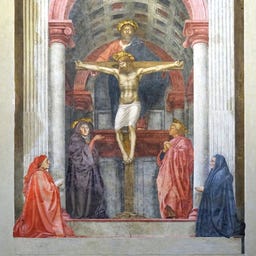
In the Basilica di Santa Maria Novella in Florence, you will encounter the "Trinità," one of the groundbreaking masterpieces of the Italian Early Renaissance. The monumental fresco by Masaccio, created between 1425 and 1428, impresses with its revolutionary perspective and astonishing depth effect.
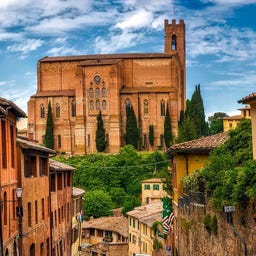
The powerful Basilica di San Domenico has been towering over the rooftops of Siena since the 13th century, offering you an impressive view of the Duomo and the Torre del Mangia. Built in a Gothic-Cistercian style, the church houses a special relic in its Renaissance chapel: the head of Saint Catherine of Siena.
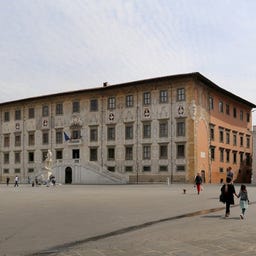
On the way to the Leaning Tower of Pisa, this photogenic square is worth a detour. Once the city's political and administrative heart, it’s now a showcase of Renaissance architecture. Impressive buildings like the Church of Santo Stefano dei Cavalieri and the Palazzo della Carovana, former seat of the Order of the Knights of Santo Stefano, surround the square. The Palazzo's facade, adorned with intricate sgraffito decorations and busts of Roman Grand Masters, whispers stories of the past.
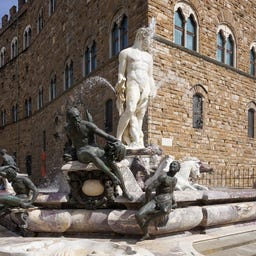
Right next to the impressive Palazzo Vecchio stands Florence's first monumental fountain, commissioned by Cosimo I de' Medici in the mid-16th century. The Neptune Fountain, created by Bartolomeo Ammannati, captivates with its central figure made of white Carrara marble, surrounded by four horses and musical Tritons.
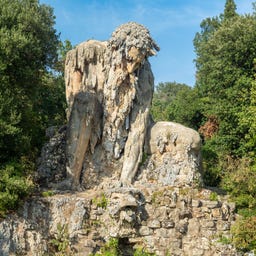
Just 10 kilometers north of Florence, you'll find the impressive Colosso dell'Appennino, a 14-meter tall stone statue from the 16th century depicting a crouching old man. This monumental work by the Flemish sculptor Giambologna stands proudly in the gardens of the Villa Demidoff and surprises visitors with a sophisticated water system that makes the statue "cry" and "sweat."
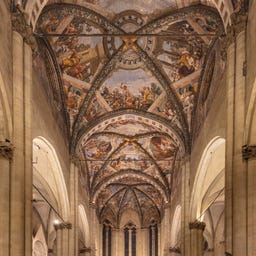
High above the Tuscan town stands the Cattedrale dei Santi Pietro e Donato, whose history dates back to the early 13th century when Pope Innocent III ordered the relocation of the original cathedral within the city walls.
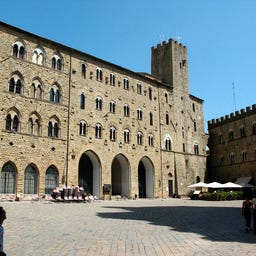
At over 500 meters above sea level, the Piazza dei Priori stands as the medieval heart of Volterra in the province of Pisa. The impressive square is lined with magnificent palaces, including the Palazzo dei Priori, the Palazzo Vescovile, the Palazzo Incontri, and the Palazzo Pretorio.
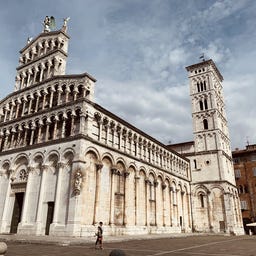
The impressive Chiesa di San Michele in Foro has been overlooking the former Roman Forum in the heart of Lucca since the 8th century. Originally a Lombard church, it underwent extensive renovations starting in 1070 under Pope Alexander II and received its characteristic façade with four loggia levels, crowned by a large marble statue of the Archangel Michael.
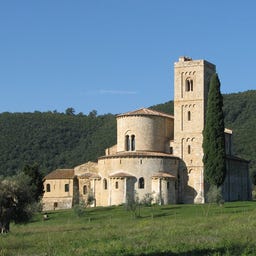
In the midst of the Tuscan hills, the Abbazia di Sant'Antimo rises, one of the most significant Romanesque churches in the region. Founded in the 8th century, the abbey flourished during the Carolingian period and served for centuries as an important stop for pilgrims on their way to Rome.
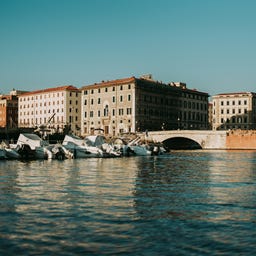
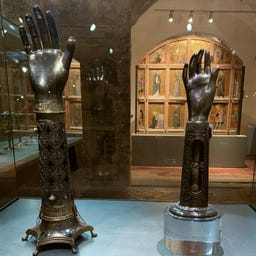
Despite its immense size, this sprawling museum remains quite unassuming from the outside. If you're spending more than a day in Siena, it’s well worth a visit. Just across from the cathedral, you’ll find one of the oldest hospitals in Europe, offering a fascinating labyrinth of corridors, halls, and underground tunnels. Among its highlights is the Pellegrinaio, a grand hall adorned with striking 15th-century frescoes. These artworks depict the life of the hospital brotherhood, offering a unique glimpse into medieval life and the social structures of the time. The museum also preserves valuable relics and artworks.
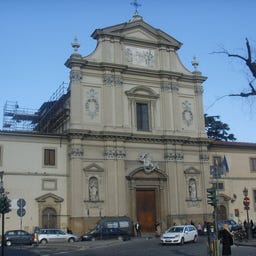

The powerful Fortezza Medicea stands as an impressive testament to Medici rule over Siena - built between 1561 and 1563 at the command of Cosimo I de' Medici to prevent further uprisings in the city. Designed by Baldassarre Lanci, the fortress captivates with its square shape, featuring four prominent bastions and extensive walkways, topped with the Medici family crest.
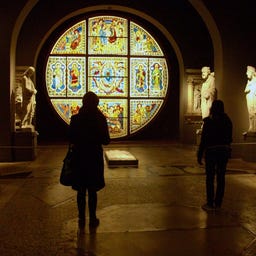
The Museo dell'Opera del Duomo, Italy's oldest private museum, preserves many of the original artworks from the cathedral. A major highlight is the access to the Facciatone Terrace on the top floor, where a fantastic panoramic view of the cathedral and Siena unfolds. Inside the museum, you'll find the impressive stained glass window by Duccio di Buoninsegna and numerous marble statues of prophets, philosophers, and sibyls.
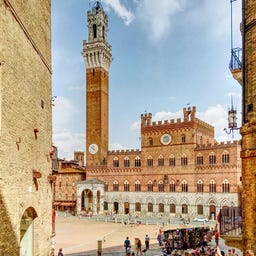
The majestic Palazzo Pubblico at the famous Piazza del Campo has been the political heart of Siena since its construction in the early 14th century and still houses the city administration today. In this impressive building with its characteristic brick and stone facade, you will find the Museo Civico, featuring significant masterpieces of Sienese art, including the famous frescoes by Ambrogio Lorenzetti and Simone Martini. The Torre del Mangia, built between 1325 and 1348, and the Cappella di Piazza, constructed in gratitude for the end of the plague, complete this unique ensemble of medieval architecture.
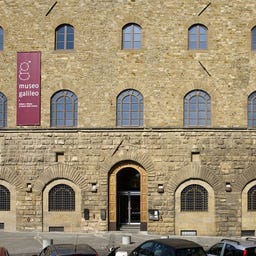
In the historic Palazzo Castellani from the 11th century, you will find one of the most significant collections of scientific instruments in the world. The collection originates from Cosimo I. de' Medici and has been expanded over centuries by the Medici and Lorraine dynasties.
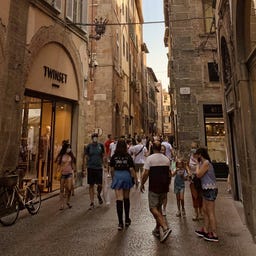
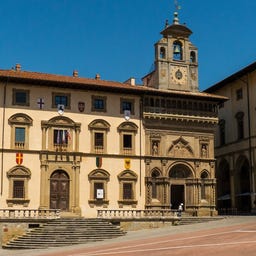
The Clock Tower in Arezzo, located on the Piazza Grande, is accessible through the Palazzo di Fraternita dei Laici. This tower is renowned for its astronomical clock, among the oldest functioning clocks in Italy, created in 1552 by the master watchmaker Felice di Salvatore da Fossato. The clock is part of a facade designed by Giorgio Vasari, featuring a unique system that includes three bells managed through complex mechanisms. This clock offers not only the time but also astronomical data, according to the Ptolemaic conception of the universe.
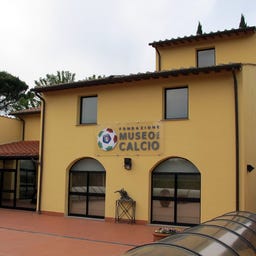
In the Hall of Fame of Italian Football in Coverciano, Tuscany, the history of Italian football has been kept alive since 2011. Initiated by the Italian Football Federation (FIGC), this hall of fame honors deserving individuals each year in various categories—from players and coaches to referees, with female footballers being recognized since 2014.
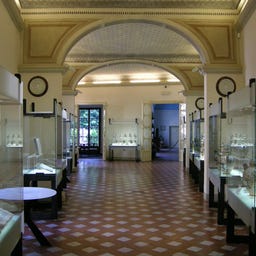
In the oldest pharmacy in Europe, which has been continuously operating since the 14th century, you can expect a unique journey through the world of historical perfume and healing arts. The magnificent Officina was established in 1612 as the pharmacy of the Dominican monks and developed under the patronage of Ferdinando II de' Medici into a world-renowned manufactory, with products exported as far as India and China.
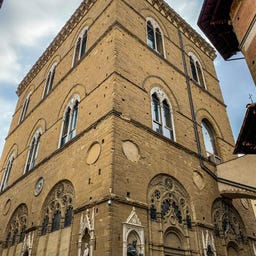
In the Chiesa di Orsanmichele, you will experience a fascinating piece of Florentine history, as what began as a small monastery in the 8th century was later transformed into a grain hall and eventually into a magnificent guild church.
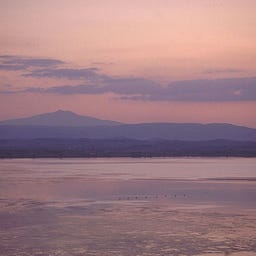
The majestic Monte Amiata rises as an extinct volcano in the south of Tuscany at 1,738 meters, offering you spectacular views all the way to Rome, Siena, and the Apennines.
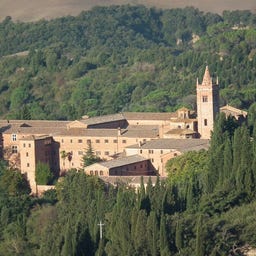
In the midst of a forest of cypress, oak, and pine trees stands the impressive Abbazia di Monte Oliveto Maggiore, founded in 1313 by Bernardo Tolomei as a Benedictine monastery. The grand entrance with a drawbridge and square tower leads you to one of the artistic highlights of Tuscany: the Great Cloister, adorned with famous frescoes by Luca Signorelli and Il Sodoma, depicting the life of Saint Benedict. In the baroque-style monastery church, you will find one of the most significant inlaid choir stalls in Europe, while the library, with its 40,000 volumes, reflects the centuries of scholarship by the monks. This still-active monastery, which served as a refuge for political refugees and Jewish families during World War II, is directly under the Holy See and, along with its historic pharmacy and expansive gardens, forms an oasis of tranquility.
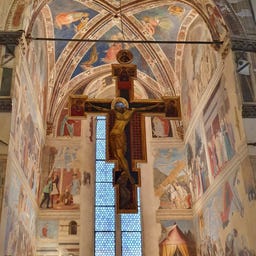
In the Tuscan city of Arezzo, you can discover the Basilica di San Francesco, an architectural gem from the early 14th century that serves both as a place of worship and a state museum. The simple Romanesque facade is deceiving – inside the single-nave basilica, you'll find significant frescoes from the 14th to 16th centuries, including works by Spinello Aretino and Giovanni di Ser Giovanni.
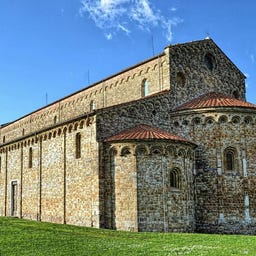
Just a few kilometers from Pisa, you will find the Basilica di San Pietro Apostolo, a fascinating example of Pisan-Romanesque architecture from the 10th century. The church is notable for its unusual design featuring two opposing apses and the absence of a traditional façade, a result of its tumultuous history dating back to the 4th century.
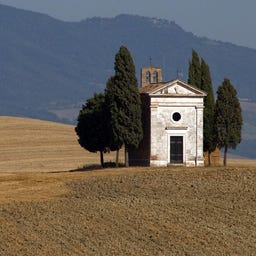
On a country road between Pienza and San Quirico d'Orcia, you discover the small Cappella della Madonna di Vitaleta, whose history dates back to the 16th century. The UNESCO-protected chapel received its current appearance from architect Giuseppe Partini, who redesigned it in 1884 after an earthquake, giving it a characteristic stone facade, rose windows, and a two-arched bell tower.
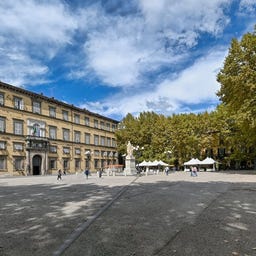
The Piazza Napoleone, also known as "Piazza Grande" by the locals, is the central square of Lucca, created by Elisa Bonaparte Baciocchi in 1806 during the Napoleonic rule. On its western side stands the impressive Palazzo Ducale, which now houses the prefecture and was built on the remains of the medieval Cittadella.
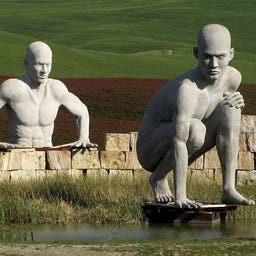
In the hills near Lajatico, close to Pisa, you will find the Teatro del Silenzio, a unique open-air amphitheater that comes to life only once a year. Opened in 2006 on the initiative of tenor Andrea Bocelli, the theater accommodates 8,000 spectators and transforms into an artificial lake after the annual performance.
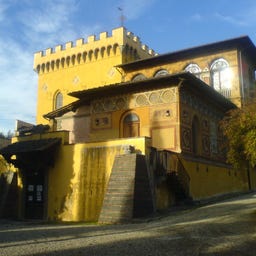
At the Museo Stibbert, you will find one of the most significant weapon collections in Europe, featuring over 50,000 exhibits collected by the English art collector Frederick Stibbert in the late 19th century. The magnificent villa, designed in an eclectic style, houses not only an impressive collection of 16,000 armors but also masterpieces by Botticelli, Crivelli, and Brueghel the Younger.
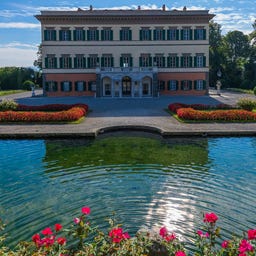
At the Villa Reale di Marlia near Lucca, you will find one of the most significant historical villas in Tuscany, which has a rich history dating back to its origins as a fortified estate in the 9th century to its transformation into a splendid residence.
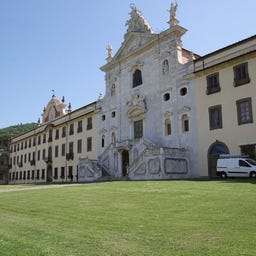
Just 10 km from Pisa, you will find the impressive Certosa di Calci, a monastery from the 14th century that now houses two attractions under one roof. In the baroque complex with its spacious courtyard, you can discover not only magnificent artworks like the Last Supper by Bernardino Poccetti from 1597 but also the natural history museum of the University of Pisa.
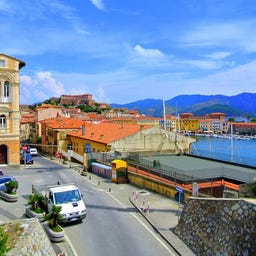
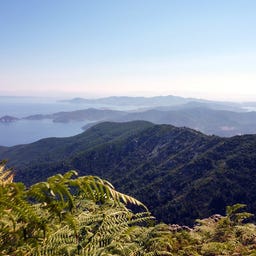
The Tuscan Archipelago National Park is the largest marine protected area in Italy, covering nearly 17,000 hectares of land and almost 57,000 hectares of sea. Here, you can find the main islands of the Tuscan archipelago, such as Elba, Giglio, and Capraia, as well as smaller islets and rocks.

The Chiesa di Ognissanti is one of the most significant churches in Florence and has a rich history that began in the 13th century with the Humiliati order. In this single-nave church, you can still find remarkable artworks today, such as the famous crucifix by Giotto and frescoes by Botticelli and Ghirlandaio from the 15th century.
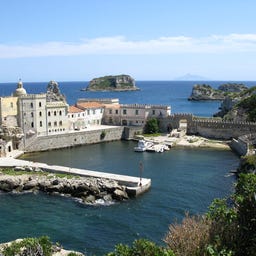
On the flat island of Pianosa in the Tyrrhenian Sea, which served as a prison island until 2011, you will find a fascinating blend of history and untouched nature. This small island, measuring just 10.3 km² with its highest point reaching only 29 meters, is home to significant archaeological treasures like the Roman villa at the white sandy bay of Cala San Giovanni and ancient catacombs.
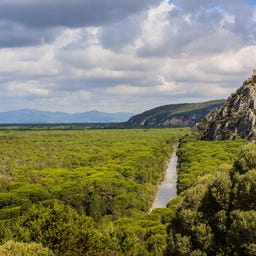
In the Maremma Natural Park, the first nature park in Tuscany, you can explore 9,800 hectares of untouched coastal landscape featuring wetlands, Mediterranean scrub, and sand dunes. Established in 1975, the park offers various hiking trails for all skill levels, including accessible paths, as well as opportunities for horseback riding, canoeing, and nighttime birdwatching.
